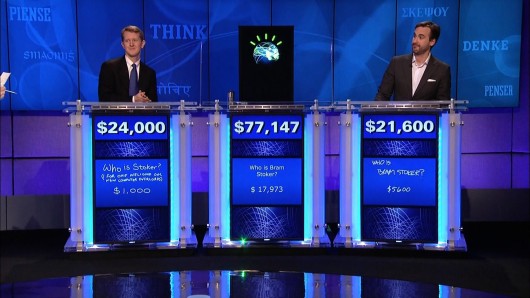Alerted that BBC News/Technology has developed a story titled ‘Intelligent Machines: The Truth Behind AI Fiction’, I follow the link with some hopeful anticipation. The piece opens: ‘Over the next week, the BBC will be looking into all aspects of artificial intelligence – from how to build a thinking machine, to the ethics of doing so, to questions about whether an AI can ever be creative.’ But as I read on my state changes to one that my English friends would characterize as gobsmacked. Instead of in-depth, critical journalism this piece reads like a (somewhat patronizing) children’s primer with corporate sponsorship. We’re told, for example, that Watson, IBM’s supercomputer ‘can understand natural language and read millions of documents in seconds’. But if it’s a deeper understanding of the state of the art in AI that we’re after, we can’t let terms like ‘understand’ and ‘read’ go by unremarked. Rather, it’s precisely the translation of computational processes as ‘understanding’ or ‘reading’, and the difference lost in that translation from our understanding and reading of those terms, that needs to be illuminated. We might then fully appreciate the ingenious programming that enables the system singularized as ‘Watson’ to compete successfully on the televised quiz show Jeopardy, despite the machine’s cluelessness regarding the cultural references that its algorithms and databases encode.
Things go from bad to worse, however, when we’re told that Watson ‘is currently working in harmony with humans, in diverse fields such as the research and development departments of big companies such as Proctor and Gamble and Coca-Cola – helping them find new products’. Why equate harmonious working relations with the deployment of an IBM supercomputer in the service of corporate R&D? And what kinds of ongoing labours of code development and maintenance are required to reconfigure a cluster of ninety IBM Power 750 servers, each of which uses a 3.5 GHz POWER7 eight core processor in such a way that it can operate usefully within these enterprises? The anthropomorphism of Watson obfuscates, rather than explicates, these ‘truths’ about artificial intelligence and its agencies.
The structure of the story is a series of loops between fiction and ‘fact’, moving from blockbuster films to just-so stories. In place of the Terminator, we’re told, ‘The US military unit Darpa [sic] is developing lots of robotic kit, such as exoskeletons to give soldiers superhuman strength and access to visual displays that will help their decision making. It is also using Atlas robots, developed by Boston Dynamics, intended for search and rescue.’ (There is a brief mention of the campaign against lethal autonomous weapons, though with no links provided). After a reference to C-3PO, we’re told that ‘In the real world, companion robots are really starting to take off’, exemplified by Pepper, which ‘has learnt about human emotions by watching videos showing facial expressions.’ (See my earlier post on companion robots here.) From Wall-E, surely among the most endearing of fictional robots (see Vivian Sobchack’s brilliant analysis) we go to Roomba, about which we’re told that ‘[a]necdotal evidence suggests some people become as attached to them as pets and take them on holiday.’ We finally close (not a moment too soon) with Ex Machina’s AVA on one hand, and roboticist Hiroshi Ishiguro’s humanoid twin on the other, along with the assurance by Prof Chetan Dube, chief executive of software firm IPsoft, that his virtual assistant Amelia ‘will be given human form indistinguishable from the real thing at some point this decade.’
In the absence of any indication that this story is part of a paid advertisement, I’m at a loss to explain how it achieved the status of investigative journalism within the context of a news source like the BBC. If this is what counts as thoughtful reporting, the prospects for AI-based replication are promising indeed.

Trackbacks
[…] IBM, researchers are working to build products atop the Watson computing platform – best known for its skill answering questions on the television quiz show “Jeopardy” – […]